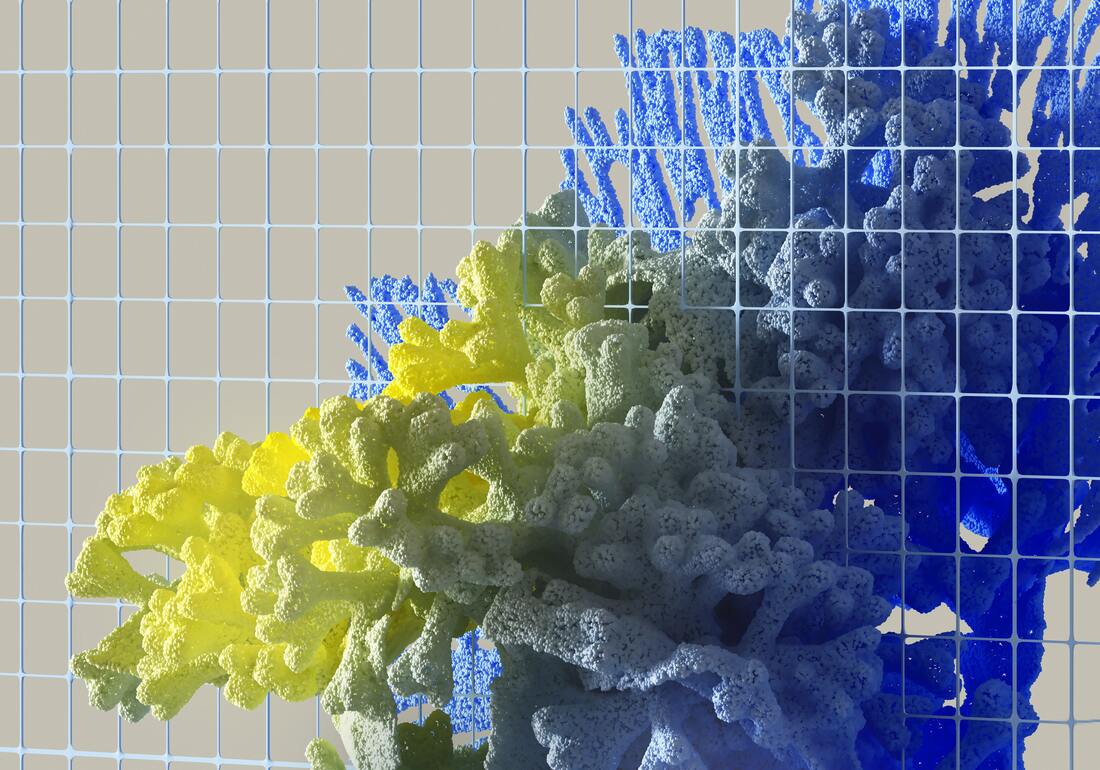Red Hat's Vision for AI and OpenShift 4.14: Embracing the Future of Enterprise Technology11/10/2023 Red Hat, a prominent player in the open-source software industry, showcased its strategic vision for the future at the KubeCon + CloudNativeCon North America event. At the center of this vision lies the integration of open-source technologies and the power of artificial intelligence (AI). In this article, we explore Red Hat's commitment to transforming enterprise capabilities, as well as the key updates to its OpenShift platform.
Red Hat's Vision for AI Red Hat's strategic vision revolves around merging the collaborative nature of open-source technologies with the transformative power of AI. This approach underscores the importance of leveraging AI-driven solutions to meet the demands of a rapidly evolving digital landscape. Red Hat emphasizes that the successful adoption of AI requires a comprehensive approach that spans from the initial concept to the production stage. In a world where data-driven decision-making and automation are becoming essential, Red Hat's focus on AI reflects a commitment to providing businesses with the tools and strategies needed to thrive in this new era. By integrating AI seamlessly into their existing teams, tools, and processes, organizations can achieve the flexibility and agility required to adapt to ever-changing market dynamics. Key Updates to OpenShift 4.14 At the KubeCon + CloudNativeCon event, Red Hat unveiled the latest release of its OpenShift platform, OpenShift 4.14. This update introduces several significant features that enhance the platform's capabilities and further improve its suitability for enterprise use.
In addition to its AI vision and OpenShift updates, Red Hat also announced the general availability of Red Hat Device Edge. This is a fully supported, enterprise-ready distribution of the open-source MicroShift platform. Red Hat Device Edge focuses on enabling developers to run applications at the edge, optimizing responsiveness and user experiences. With the integration of Red Hat Ansible Automation, Red Hat Device Edge enhances management capabilities for thousands of edge devices and sites. This is particularly significant as edge computing becomes increasingly important for delivering real-time, low-latency services in various industries, including IoT, manufacturing, and retail. Dedication to the Backstage Community Expanding their commitment to the Backstage community, Red Hat announced the donation of a set of new back-end plugins. These plugins simplify the integration of Red Hat's platforms and technologies into developers' existing application development pipelines. By providing a unified interface, Backstage facilitates streamlined management of software development and infrastructure, fostering collaboration and efficiency. Red Hat's strategic vision for AI and the updates to its OpenShift platform demonstrate the company's dedication to providing innovative solutions for enterprises. By combining the power of AI with open-source technologies, Red Hat aims to empower businesses to achieve their digital transformation goals. Moreover, with its focus on flexibility, security, and seamless integration, Red Hat is positioning itself as a key player in shaping the future of enterprise technology. As technology continues to advance, businesses that embrace the integration of AI and open-source technologies are likely to be better equipped to navigate the complexities of the digital age and to remain competitive in an ever-changing landscape. Red Hat's strategic vision and product updates are indicative of its commitment to helping organizations achieve just that.
0 Comments
AuthorJon Corchis, Manager of Solutions Architecture, Unilogik Systems Inc. In today's evolving tech landscape, businesses rely heavily on a diverse array of IT products to streamline operations, enhance efficiency, and drive innovation. However, the value of individual IT products extends beyond their standalone capabilities. Demonstrating how multiple IT products integrate and collaborate has become increasingly vital for organizations. Unilogik is in the process of building an integrated platform across our Partners. Integrating multiple IT products enables seamless data sharing, streamlines workflows, and eliminates manual interventions. By showcasing integration capabilities, organizations can highlight the potential for increased operational efficiency. Employees can access relevant information and tools within a unified environment, reducing the need for context switching and minimizing errors. Demonstrating integration paves the way for optimized processes and empowers teams to focus on core tasks, ultimately boosting productivity. IT product integration allows for a holistic view of data across various systems and platforms. When multiple products work together, organizations can gain comprehensive insights, leading to more informed decision-making. By demonstrating integration, businesses can showcase how data from different sources can be consolidated, analyzed, and visualized to provide actionable intelligence. This promotes data-driven decision-making, enabling businesses to adapt swiftly to changing market dynamics and gain a competitive edge. Customers expect a seamless experience across different touchpoints when interacting with a business. Demonstrating how IT products integrate can significantly impact customer experience. Integration enables a unified view of customer data, facilitating personalized interactions and improved service delivery. It allows businesses to create a consistent experience across channels, ensuring smooth transitions between online and offline interactions. By highlighting integration capabilities, organizations can demonstrate their commitment to meeting customer expectations and providing a superior user experience.
Integration encourages collaboration between different IT product vendors, enabling the development of innovative solutions that address complex business challenges. By showcasing integration possibilities, organizations encourage cross-functional collaboration, foster partnerships, and stimulate innovation. Demonstrating how IT products integrate not only promotes the exchange of ideas and expertise but also opens opportunities for new product enhancements, features, and integrations. This collaborative approach drives technological advancements and propels the organization ahead of the competition. Jon Corchis, Manager of Architecture Unilogik Systems Inc. IT (Information Technology) application monitoring is no longer a choice for successful enterprises, nor is automation, so it makes perfect sense to lower the IT automation barriers (time, training, staffing, cost, etc.) to entry. Project Wisdom was announced at Ansible Festival in 2022; it is another project within the IBM AI (Artificial Intelligence) for Code research group in collaboration with Red Hat. This choice makes sense since Ansible is the de facto tool for IT automation. The goal of Project Wisdom is to make large-scale infrastructure automation using plain English a reality. Most AI models depend on real world data to be successful. In true Red Hat open-source practice there is currently a Beta program in progress, and IBM states that the AI model and underlying engine will be open as well.. This project uses Ansible playbooks from the participating Beta community to further refine their AI model. Project Wisdom’s interface is Visual Studio Code IDE with an Ansible YAML extension. Users describe what they want to accomplish using plain English in the name tag, and after a moment, Project Wisdom makes a proposal. At that time, an experienced Ansible developer can change the code, or someone less experienced with Ansible can take the playbook and run it against a pre-production server to compare against the desired state of the host. In both cases there is value added. The experienced playbook developer is not bogged down with mundane programming; they can use their experience to review the playbook directly, which frees them up for more value-added tasks. While someone new to Ansible can learn from the community through the AI. AI today is not perfect and never will be, just like humans. Yes, there are deterministic exceptions, but Coding is an art. Compare the differences between a streaming service recommending a movie versus one of your friends – both are hit or miss. The key point about code that writes code is that it still requires human intervention. Like all code that is released to production, there is a process that happens before code or configuration ever touches a production server or device. In general, code that writes code puts more demand on scanning tools and human reviews to verify code as part of the release process.
Unilogik will be watching the progress of this project closely in order to help our customers get to a mature automation process quickly. Project Wisdom roadmap features, like redundancy identification and content explanation, will also help accelerate this progress. How is your company using AI or planning to use AI to do more with less? Add your comments below. As the world becomes increasingly digitized, the demand for software development has skyrocketed. Developers are under constant pressure to deliver high-quality applications quickly and efficiently, which has led to the rise of DevOps practices. DevOps aims to break down silos between development and operations teams, and streamline the software development lifecycle (SDLC) through automation and collaboration.
However, managing and deploying containerized workloads can be challenging. Developers need to juggle multiple tools and platforms, stay up-to-date with the latest technologies, and keep their deployments running smoothly. This is where Unilogik comes in. Unilogik Systems is hosting a three-part series on Streamlining DevOps with GitLab and OpenShift. The series focuses on how to leverage GitLab and OpenShift to simplify containerized workload deployments and scale modern applications. GitLab Solutions Architect Bart Zhang will cover everything from deploying GitLab on OpenShift to building and deploying app pipelines using GitLab Ci/CD and in-repo constructs. The first session, "Deploying GitLab on OpenShift," will take place on Tuesday, May 9, at 10:00 AM –10:45 AM PDT. This session will cover the process of deploying the GitLab Self-Managed Operator to OpenShift, and basic steps to administer GitLab on OpenShift. The second session, "Deploying GitLab Runner on OpenShift," will take place on Tuesday, May 23, at 10:00 AM –10:45 AM PDT. This session will demonstrate how to deploy a fleet of GitLab Runners to OpenShift by initiating an agent-based connection between GitLab and OpenShift. Participants will also execute several test pipelines leveraging GitLab Runners on OpenShift. The third and final session, "Deploying app build and deploy pipelines to OpenShift from GitLab," will take place on Thursday, June 8, at 10:00 – 10:45 AM PDT. This session will cover how to build pipelines that deploy workloads to OpenShift leveraging GitLab Ci/CD and in-repo constructs to support an end user application hosted on OpenShift. Together, Unilogik Systems and Red Hat OpenShift enable organizations to build, deploy, and manage cloud-native applications with greater agility, scalability, and efficiency. Red Hat OpenShift brings together tested and trusted services to reduce the friction of developing, modernizing, deploying, running, and managing applications. With GitLab and OpenShift, developers can simplify their workload deployments and gain greater agility, scalability, and efficiency. Author: Jon CorchisManager of Solutions Architecture, Unilogik Systems Inc. After spending time with several clients, I see a common gap in their monitoring solutions – siloed data. Each team, department or project generated its own application and infrastructure observability data with no common way to look at the data across the organization. Not only was the data siloed, but the data's type and granularity are different. Under these conditions, problem diagnosis of operational issues becomes difficult and time-consuming. Read on if you have been part of a swat team trying to figure out why there is an application issue late at night. Change in an organization normally comes in three forms: People, Process and Technology.
In most cases, the teams are doing what’s right for them in terms of data collection, monitoring, alerts and support. However, if enterprise thinking is lost the Tragedy of the Commons applies. This gap clearly falls on Enterprise Architecture to provide an organizational strategy for observability. Included in that strategy is standard tooling to accomplish its objectives. One such tool that I am excited about is Dynatrace. With Dynatrace enterprises can quickly evolve their observability maturity. Install Dynatrace OneAgent on your key application hosts and Dynatrace will be able to provide a unified view of your full stack almost immediately. After several days of running Dynatrace will have a good picture of your application load and be able to identify saturation issues. Most importantly Dynatrace’s Root Cause Analysis is second to none – just ask Forrester or Gardner. These features alone go a long way in helping organizations meet their “do more with less” objective. There are so many other important features in Dynatrace that cannot be covered in a short article. If your organization is familiar with the pain points mentioned above and you are ready to evolve, reach out to sales@unilogik.com and ask for a demonstration. As businesses look to do more with less, Automation has become an essential tool for IT departments. Automation not only saves money in the long term, but also increases the quality and predictability of processes. In this blog post, we will discuss how GitLab can be used to deploy Azure infrastructure.
Introduction Automation is a critical component of modern IT operations. It enables IT departments to streamline processes, reduce manual labor, and increase the efficiency of their operations. One of the key benefits of automation is that it helps organizations save money over time by reducing the amount of time and resources required to perform tasks. At Unilogik, we help organizations across Canada implement GitLab to streamline deployment of Azure infrastructure. GitLab is a popular DevOps platform that offers a range of features for continuous integration and continuous deployment (CI/CD). It provides a unified platform for source code management, testing, and deployment, making it easier for IT teams to manage their infrastructure. Using GitLab to Deploy Azure Infrastructure GitLab provides a range of tools and features that make it easier to deploy and manage infrastructure in Azure. These include: Azure DevOps Integration: GitLab integrates with Azure DevOps, providing a seamless way to manage infrastructure and code. IT teams can use GitLab to manage their source code and use Azure DevOps to manage their infrastructure. Infrastructure as Code: GitLab allows IT teams to manage their infrastructure as code, making it easier to automate the deployment and management of infrastructure. With Infrastructure as Code, IT teams can define their infrastructure using code, making it easier to version and manage changes. Deployment Pipelines: GitLab provides a powerful deployment pipeline feature that makes it easy to automate the deployment of infrastructure. IT teams can use deployment pipelines to define the steps involved in deploying their infrastructure, making it easier to manage and automate the process. Automated Testing: GitLab provides tools for automating the testing of infrastructure, making it easier to catch and fix issues before they impact production. IT teams can use GitLab to automate their testing process, ensuring that their infrastructure is always in a good state. By using GitLab to deploy and manage their Azure infrastructure, IT teams are able to streamline their operations and improve the quality and predictability of their processes. This helps them to do more with less, saving money and improving the efficiency of their operations. Standing up a Red Hat Openshift Cluster on Azure In addition to deploying Azure infrastructure, IT teams at Unilogik also use GitLab to stand up a Red Hat OpenShift cluster on Azure. OpenShift is a popular container platform that provides a range of features for managing containers and microservices. By using GitLab to deploy OpenShift on Azure, IT teams are able to automate the process and streamline their operations. Conclusion By using GitLab to deploy and manage their Azure infrastructure, IT teams are able to do more with less. Automation enables them to streamline their processes, reduce manual labor, and increase the efficiency of their operations. If you're looking to automate your IT operations and improve the quality and predictability of your processes, reach out to Unilogik Systems for more information. Software Intelligence Platform helps organizations accelerate digital transformation with Unilogik Systems Inc.
VANCOUVER, BC – Unilogik Systems Inc. announced it has partnered with software intelligence company Dynatrace (NYSE: DT) to help organizations across Canada accelerate digital transformation with greater confidence. The Dynatrace® platform combines extensive hybrid and multicloud observability and continuous runtime application security with advanced AIOps to deliver precise answers and intelligent automation from data. This helps customers transform the way their digital teams work, enabling them to deliver new services faster and proactively optimize digital experiences with automation and intelligent observability. “As organizations look to innovate faster, they increasingly rely on dynamic and distributed hybrid and multicloud architectures,” said Michael Allen, VP of Worldwide Partners, Dynatrace. “The enormous quantity of data emanating from these environments has surpassed human ability to manage. With observability, runtime application security, advanced AIOps, and continuous automation built into the platform, Dynatrace provides digital teams with the most precise and actionable insights into their applications and infrastructure. This enables organizations to migrate more services to the cloud and transform faster, with greater confidence and less risk. We’re excited to work with Unilogik Systems to empower our joint customers to continue pushing the boundaries in the pursuit to deliver innovative digital experiences and services.” Unilogik Systems Inc. prepares clients with the resources needed to transform their digital environments to keep up with the pace of industry innovation by providing a holistic approach and long-term outlook without vendor lock-in. “We are thrilled to work closely with Dynatrace,” said Craig Faulkner, President, Unilogik Systems Inc. “As the need for intelligent observability and automation rises, our team is excited to integrate Dynatrace’s advanced capabilities with our solution to help our clients reach their digital transformation goals with greater confidence.” Unilogik works actively with clients to ensure successful integration and deployment of products to fulfill client needs, help clients scale, and provide value specifically curated to client needs alongside software partners, including Red Hat, GitLab, Tableau, and Fortinet. Dynatrace’s unrivaled market leadership and product capabilities, coupled with Unilogik’s execution ability, create opportunities for clients to innovate faster and transform how their digital teams work. About Unilogik Systems Inc. Headquartered in Vancouver, BC, Unilogik Systems Inc. is a trusted technology integrator to hundreds of large Canadian corporate and public sector organizations, helping its customers source, transform and manage their technology infrastructure to deliver digital transformation, enabling users to innovate and drive business development. GitOps is a way of using Git as a single source of truth for infrastructure and application configuration. It works by using Git as the central repository for storing all the desired state for the system, including infrastructure, application code, and policies. When changes are made and committed to the repository, GitOps tools can automatically detect the changes and take the necessary actions to ensure that the actual state of the system matches the desired state. This can include provisioning or updating infrastructure, deploying applications, and enforcing policies. By using Git as the source of truth and automating the process of ensuring that the actual state of the system matches the desired state, GitOps can help teams achieve more reliable, predictable, and reproducible deployments. It can also help teams collaborate more effectively and reduce the risk of errors or drift in their infrastructure and applications. GitLab is a web-based Git repository manager that provides source code management (SCM), continuous integration, and more. It is designed to help teams collaborate on software development projects and provides a single place for teams to manage their code, track their progress, and deploy their software.
GitLab includes features such as:
|
AuthorHeadquartered in Vancouver, BC, Unilogik Systems Inc. is an IT integrator to hundreds of Canadian organizations. Archives
November 2023
Categories |
|
|
© Copyright 2022 Unilogik Systems Inc. All Rights Reserved.










 RSS Feed
RSS Feed
